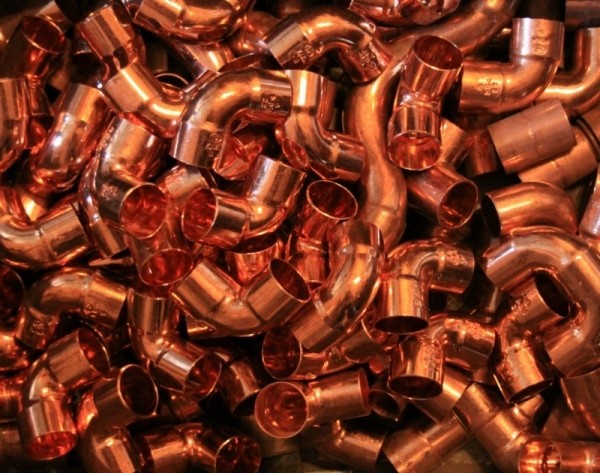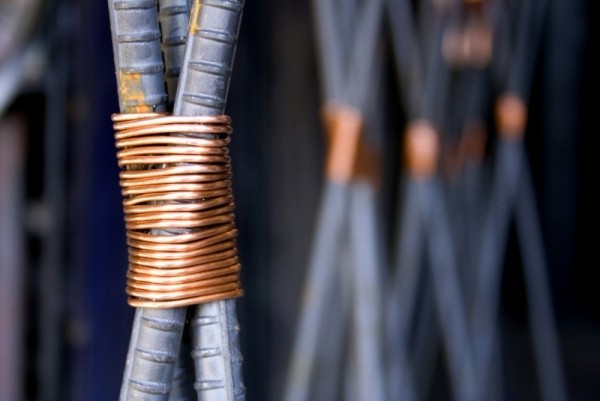This is the third in a series of articles looking at the top 10 most important drivers behind some of the main commodity futures prices. Episode 3 looks at copper.
1) US dollar
Like most internationally traded commodities copper is priced in US dollars. At its most basic a decrease in the value of the US dollar relative to a commodity buyer’s currency means that the purchaser will need to spend less of their own currency to buy a given amount of the commodity. As the commodity becomes less expensive demand for the commodity rises, resulting in an increase in the price and vice versa.
A weaker dollar can also act as a disincentive to producers to increase output. For example, a depreciation of the US dollar against the Chilean peso can reduce profit margins for a copper miner in Chile. All of the miner’s revenues will be received in US dollars, which will now buy less pesos, but some proportion of the costs will be denominated in pesos and will remain constant (at least in the short term). Therefore, the prospect of a lower profit margin acts as an incentive to decrease the supply of copper.
Copper prices have a relatively high inverse correlation against the dollar of around -0.45.

2) Oil prices
The refining of copper is above all an energy intensive process. Energy costs account for approximately 30% of the total cost of extracting the ore, and these costs can rise to 50% during the processing of the ores (smelting and refining). When the oil price rises, energy costs will go up, and the copper price may rise too.
3) Collateral demand in China
The use of commodities as collateral has been particularly popular in China for cash strapped companies unable to secure credit using traditional banking channels. Various estimates suggest that approximately one-third of copper imported into China may have been passing through financing deals. If financial conditions tighten, copper may be liquidated when loans are either defaulted on or can’t be rolled over, which can lead to worse financial conditions as companies’ collateral loses value.
4) Economic activity
The copper price is often given the moniker “Dr Copper” to describe the red metals supposed omniscience in gauging developments in the global economy. Within the manufacturing sectors, copper is widely used in machinery and is also turned into end products and semi-manufactures like pipes and tubes. Because it acts as an effective conductor of heat and electricity, copper is also used in the installation, energy and telecommunications sectors. Meanwhile, as a good conductor of heat, it is also widely used in the transport equipment industry.
Developments in the world economy have a strong correlation with movements in the copper price. Trends in Chinese GDP growth (and, to a lesser extent, US and EU GDP growth) and world trade play a major role. The correlation with China is the key factor in this context. China accounts for the largest share by far of global copper consumption (around 46%).

5) Copper mine supply
Copper ore production is concentrated in South America, particularly in Chile which accounts for around one-third of global mined copper supply. The supply of copper ores, the quality of the ores and the costs of extracting them also have an impact on the copper price. Meanwhile, unforeseen events like worker strikes, earthquakes, bad weather and geopolitical instability can force copper prices upwards.
6) Copper refining activity
Copper cannot be used in its raw form, but instead has to be refined. Through refining, the unwanted material is progressively removed, concentrating the copper up 99.99 %, the standard for Grade “A” copper. Copper smelters generally operate as a toll, but they may also sell the metal on behalf of the miner. All the risk (and reward) of fluctuating copper prices falls on the miner’s shoulders. The treatment and refining charges are dynamic, and tend to rise when there is a high availability of copper ore. In this way it can be seen that lower copper prices, as a result of higher ore supply may be countered by higher treatment and refining charges.
7) The Strategic Reserves Bureau (SRB)
The Chinese government stockpile manager is the worlds ultimate copper buyer, buying copper when prices are low to ensure the country has enough supply to meet its industrial development needs. The SRB operates with stealth in the copper market, not publicising its purchases.

8) Copper scrap availability
Scrap copper accounts for roughly one-third of global usage of the metal according to the International Copper Study Group. A sharp drop in the supply of scrap copper during the financial crisis, amid a tumble in prices helped to spur the recovery in the copper market. Data on scrap markets tend to be opaque, more so than primary copper markets. Scrap copper supply tends to slow when the economy slows, meaning that there are fewer offcuts from manufacturing and people tend to replace air conditioning systems and cars less frequently.
9) Speculation
The activity of speculators can influence the futures price of copper, perhaps away from where fundamental alone would suggest, at least in the short term. Recently, the activity of Chinese hedge funds has increased since copper futures markets in China have launched. These funds sometimes take advantage of poor liquidity and uncertainty in the market to move the copper price by a significant margin. Given the strong influence that Chinese demand has on copper, movements in Chinese futures markets can sometimes set the tone for other commodity futures markets elsewhere in the world.
10) Copper stock levels
In theory rising copper stock levels should be indicative of a weak market, as supply exceeds demand. It is normal for prices and inventory levels to generally move in opposite directions. When copper producers don’t like the market price and think that they can get a better one by waiting, they put their production into warehouse storage and wait for better times. When prices rise up to or above a price level that the producers like, copper starts coming back out of inventory and onto the market. So watching copper inventory levels can give us insights about where the producers think a fair price is.
